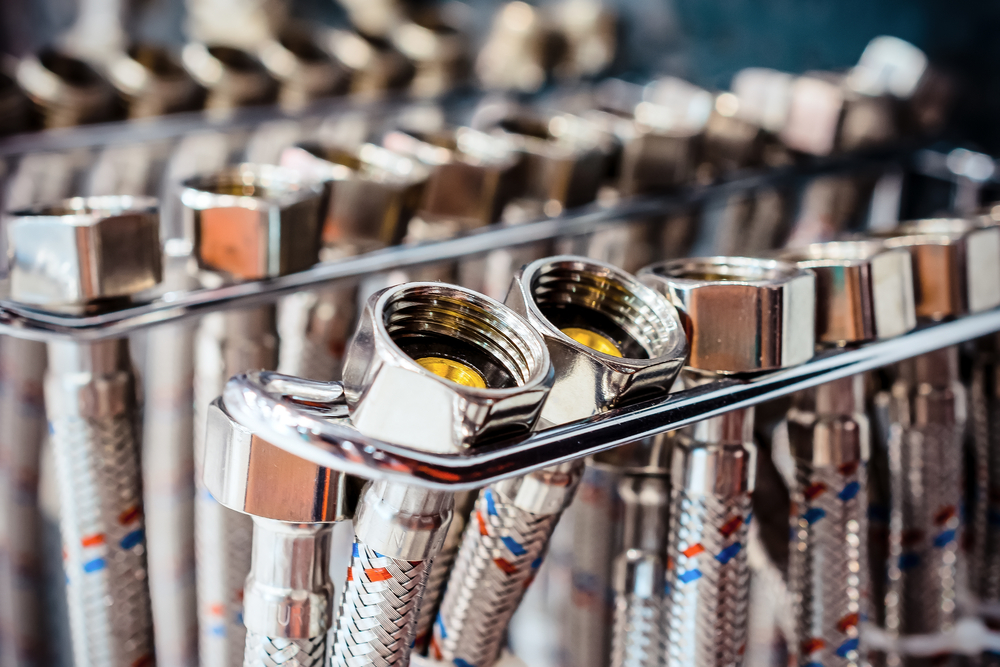
When to Use Spiral vs. Braided Hydraulic Hoses
Hydraulic hoses are an essential component of many industrial systems, and choosing the right type is crucial to ensure reliability, performance, and safety. Two of the most common types of hydraulic hoses are spiral and braided hoses. While both of these hoses are designed to transport fluids under high pressure, their construction differs significantly, which affects their performance in different applications. This article explores the difference between spiral and braided hoses, outlining their key features and helping you understand when to use each type of hose in various hydraulic systems.
Understanding Hydraulic Hoses
Before diving into the specifics of spiral and braided hydraulic hoses, it’s important to first understand what hydraulic hoses do and how they function. Hydraulic systems rely on the transmission of fluid under pressure to perform tasks such as lifting, pushing, or rotating. Hydraulic hoses are designed to withstand the high pressures and potentially harsh environments in which they operate, often carrying hydraulic fluids such as oil or water-based fluids.
The construction of hydraulic hoses typically consists of an inner tube, which carries the fluid, a reinforcement layer for strength, and an outer cover that protects the hose from abrasion and environmental factors. The materials used in these hoses, such as rubber, thermoplastic, or synthetic elastomers, vary based on the specific requirements of the hydraulic system.
When choosing a hydraulic hose, factors like pressure rating, flexibility, and the environment in which the hose will operate must all be considered. The two primary types of hoses, spiral and braided, each have unique advantages and are suited for different applications.
The Difference Between Spiral and Braided Hydraulic Hoses
The key difference between spiral and braided hydraulic hoses lies in how the reinforcement layers are constructed. The reinforcement layers are crucial for the hose’s ability to withstand internal pressure, so understanding these differences is essential when making a selection.
A braided hydraulic hose consists of one or more layers of braided wire or synthetic fibers wrapped around the inner tube. The braids typically use steel wire, and the number of braids may vary depending on the hose’s pressure rating and application. Braided hoses are generally more flexible and easier to bend around obstacles, making them ideal for applications where the hose needs to move or flex frequently.
In contrast, a spiral hydraulic hose is reinforced with multiple layers of steel wire spirals wrapped around the inner tube. These spirals are wound tightly to provide a stronger and more rigid reinforcement. Spiral hoses can handle significantly higher pressures compared to braided hoses and are designed for heavy-duty applications. The increased number of wire layers in a spiral hose offers better resistance to crushing and impact, which makes them ideal for environments with rough conditions or where high-pressure hydraulic systems are in use.
Both hose types offer excellent resistance to wear, corrosion, and various chemicals, but their structural differences make them better suited for different types of tasks. Understanding the demands of your hydraulic system is key to choosing the right one.
When to Use Spiral Hydraulic Hoses
Spiral hydraulic hoses are typically used in heavy-duty, high-pressure applications where the hose will experience high mechanical stress and environmental challenges. These hoses are designed to withstand the most demanding conditions, making them ideal for industries such as construction, mining, oil and gas, and industrial manufacturing.
One of the primary advantages of spiral hoses is their ability to handle extremely high-pressure environments. For instance, if your hydraulic system operates at pressures above 3000 psi, a spiral hose is likely the best choice. The multiple layers of steel wire spirals allow the hose to manage these higher pressures and provide greater strength to prevent bursting or failure.
In addition to their pressure-handling capabilities, spiral hoses also perform better under conditions where there is significant vibration, abrasion, or twisting. These hoses are often used in applications where the hydraulic system is exposed to harsh environments, such as on construction equipment or in mining machinery. In these settings, the hose may be subject to intense movement, impact, or friction that can wear down less durable hoses.
Another key advantage of spiral hoses is their resistance to crushing. Because of the way the steel wires are wound around the tube, spiral hoses are less likely to collapse under pressure or external forces, making them a reliable choice for systems that operate in tight or congested spaces where the hose could be crushed or pinched.
When to Use Braided Hydraulic Hoses
While spiral hoses excel in high-pressure and heavy-duty applications, braided hydraulic hoses are often the better choice for systems with moderate pressure requirements and those needing more flexibility. Braided hoses are widely used in a range of industries, including automotive, agricultural, and manufacturing sectors, where flexibility and lighter pressure ratings are more common.
A key advantage of braided hoses is their flexibility. The braided construction allows the hose to bend and maneuver easily, making it ideal for applications where the hose needs to be routed through tight spaces or needs to be frequently adjusted. This makes braided hoses particularly popular in the automotive industry, where flexibility is essential for connecting various hydraulic components in compact spaces.
Braided hoses also tend to be more cost-effective than spiral hoses. For hydraulic systems that do not require the extreme pressure handling of a spiral hose, a braided hose can offer sufficient performance at a lower price point. If your system operates at pressures below 3000 psi and does not face the same harsh environmental conditions as heavy-duty machinery, a braided hose will likely meet your needs.
Additionally, braided hoses offer excellent resistance to abrasion and are less likely to kink than spiral hoses, making them an excellent choice for applications where the hose may be exposed to wear and tear but not extreme pressure or crushing forces.
Factors to Consider When Choosing Between Spiral and Braided Hydraulic Hoses
When deciding between spiral and braided hydraulic hoses, there are several factors that should be taken into account. One of the most important is the operating pressure of the hydraulic system. If your system operates under high pressure, particularly above 3000 psi, a spiral hydraulic hose is typically the better option due to its superior strength and durability.
Another key factor is the level of flexibility required for the application. If the hydraulic hose needs to navigate around obstacles or be routed through tight spaces, braided hoses are often preferred for their superior flexibility. On the other hand, if the system is subject to intense mechanical stress or heavy-duty operations, spiral hoses provide a higher degree of resistance to pressure and wear.
Environmental conditions are also a critical consideration. Spiral hoses are ideal for environments with rough terrain or machinery that experiences significant movement or impact. For less harsh conditions or where high flexibility is necessary, braided hoses are often sufficient and more cost-effective.
Finally, consider the lifespan and cost of the hoses. Spiral hoses tend to be more expensive due to their construction and durability, so they are best used in applications where the additional strength is necessary. Braided hoses offer a more economical solution for less demanding tasks and can still provide excellent performance for most standard hydraulic systems.
Conclusion
Choosing between spiral and braided hydraulic hoses comes down to the specific needs of your hydraulic system. Spiral hoses are ideal for high-pressure, heavy-duty applications where durability and resistance to crushing and wear are crucial. These hoses are often used in industries like construction, mining, and manufacturing, where high-pressure and challenging environments are common. On the other hand, braided hoses are more suited for applications that require flexibility, moderate pressure ratings, and cost-effectiveness. By understanding the key differences between spiral vs braided hydraulic hose and evaluating the demands of your system, you can select the right hose to ensure efficient, reliable, and safe performance.
Royal Brass Incorporated
Welcome Royal Brass Incorporated! We are your 3rd generation, family-owned, local hose supplier! Our family has dedicated our services to supplying northern California with all types of hoses, fittings, flanges, regulators, valves, adapters, and gauges. We pride ourselves on having the most extensive inventory in northern California. Our inventory ensures that we can fix most products on site, the same day. Here at Royal Brass Incorporated, we only hire qualified individuals who are trained in factory sales. Our fully stocked warehouses ensure that we can fill your hydraulic and pneumatic hose, tubing, and fitting needs on time, every time. High-quality customer service is our goal and has been since 1952. Stop by or contact us today!
Categorised in: Hydraulic Hose





